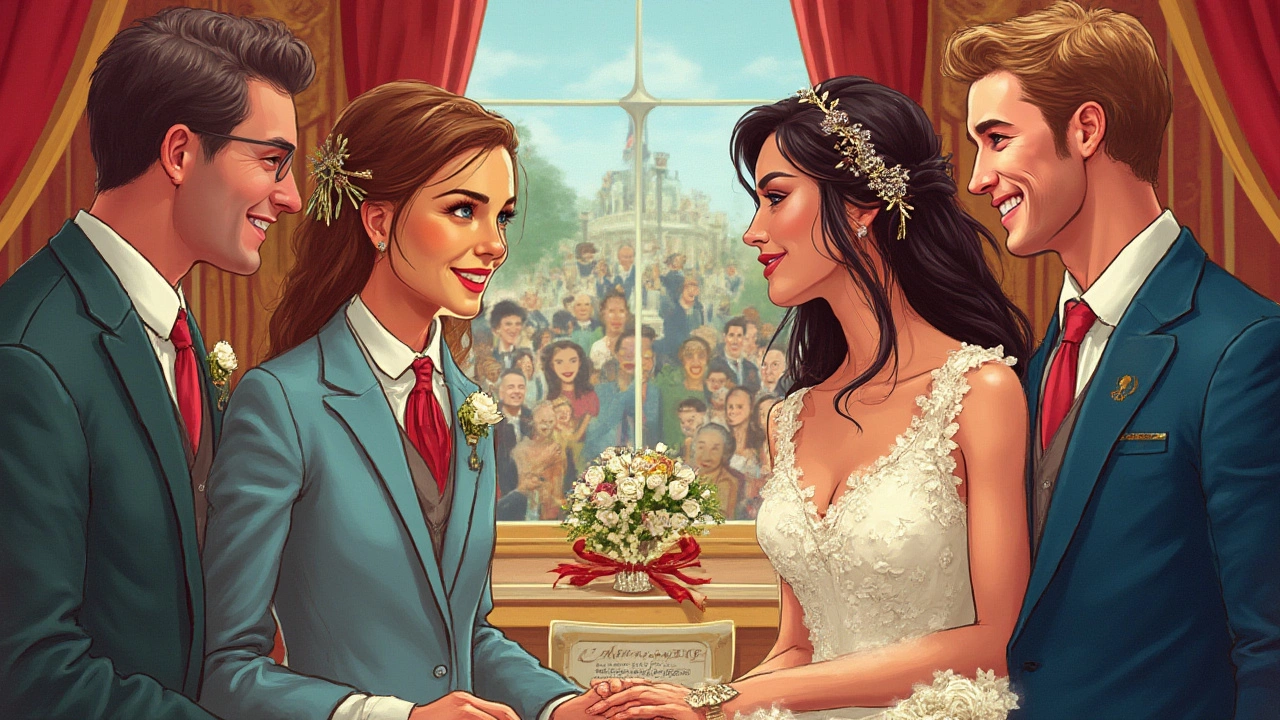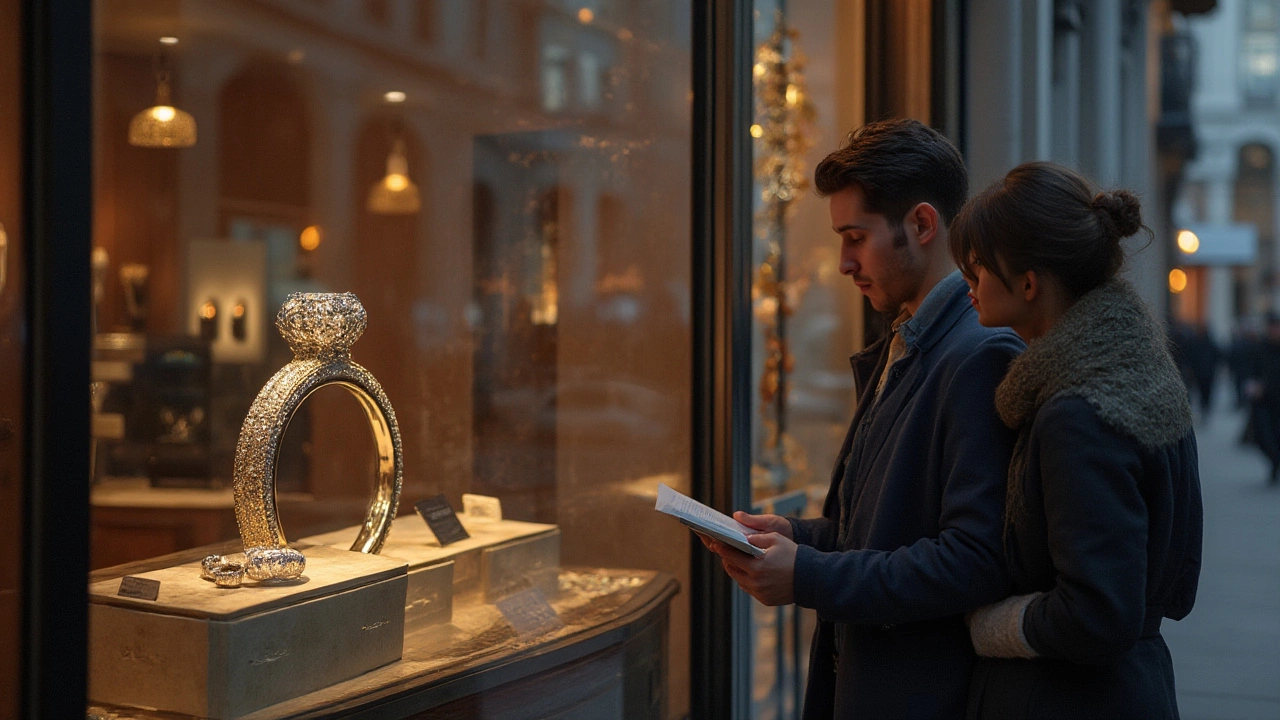My friend dropped her phone and laughed—embarrassed—when I asked if she’d ever spend $20,000 on a wedding ring. "Only if it came with a kitten the size of a bear," she said. The idea makes people squirm, blush, or flex dramatically on Instagram. But here’s the kicker: you probably know someone who’s either spent, considered, or been pressured to covet a ring in that price bracket. Whether you’re diamond-hunting at breakfast or scrolling TikTok late at night, that five-figure number haunts couples, parents, and jewelers everywhere. Is $20,000 too much for a wedding ring, or does that price tag make sense these days? It’s messier than you'd think.
The Price Tag: Where Does $20,000 Take You?
Twenty grand could buy you a used car, pay for a semester of college, or whisk you away on a world tour. In the wedding world, it can buy one hell of a ring—but it also divides opinions like politics at Thanksgiving dinner. Let’s get specific. In 2024, the average engagement ring in the US came in at $6,000, according to The Knot’s annual survey. Only about 7% of couples forked out over $10,000. But, luxury jewelers like Tiffany or Cartier? They quickly roll out diamond solitaires and vintage settings that break the $20,000 mark before you even start customizing.
In New York or San Francisco, some couples see $20,000 as a benchmark for ‘serious’ rings—a status symbol as much as a sign of love. Elsewhere, it sounds wild. For that price, you could get a brilliant round diamond around 2.5 carats, near-flawless clarity, and a platinum or handcrafted designer band. If you opt for a fancy colored diamond or celebrity-endorsed designer, suddenly you’re in Kim Kardashian territory. But don’t be fooled: plenty of people get knocked back by sticker shock, not swept away by sentiment.
| Ring Feature | Cost Estimate (2025) |
|---|---|
| 1 carat round diamond, G color, VS1 clarity, gold | $5,500–$9,000 |
| 2 carat round diamond, F color, VS1, platinum | $18,000–$25,000 |
| Designer/Luxury Brand Premium | +15% to +50% |
| Custom Design, Intricate Halo Setting | $1,000–$7,000 (add-on) |
Lab-grown diamonds add another layer. They’re chemically identical, but they cost 40–60% less—meaning a $20,000 natural diamond ring might go for $8,000–$12,000 with a lab-grown stone. Shopping pre-owned or vintage? You get craftsmanship, history, and value for less.
Sometimes a ring is loaded with secret meaning: a sapphire that belonged to your grandmother, a band engraved with coordinates of your first kiss. Those aren’t listed on a price tag. But let’s be real, a $20,000 wedding ring almost always comes with high expectations—often imposed by our culture, glossy ads, or even family tradition. And sometimes we buy into those expectations without even realizing it.

Love, Status, and Social Pressure: Why Do We Spend So Much?
Ever catch yourself ogling a ring on someone’s finger and estimating its cost? Social media makes it easy to turn love into a competition. There’s the old 'three-month salary rule'—thanks, De Beers—and in a 2023 Harris poll, 31% of Americans still cited it as a spending guideline. This “standard” was marketing genius, not a human necessity. The rise of influencers showing off five-carat rocks has only upped the ante for what people imagine is ‘normal.’
The tricky part: a $20,000 ring might feel absurdly expensive to some, but miserly to others, depending on culture, region, and social circle. For some families, especially in certain Asian or Middle Eastern traditions, gifting elaborate jewelry isn’t just normal—it’s expected. In big cities like LA or Sydney, wedding rings double as networking chips and power jewelry. But in rural Minnesota or Spain, that same price is more likely to get a laugh—or a scolding from grandma. People’s expectations are shaped by what they grew up with, what their partner wants, and what their friend group normalizes.
Then you have Hollywood, flooding the internet with giant diamond engagement reveals. In 2022, Machine Gun Kelly proposed to Megan Fox with a $340,000 toi et moi ring. Celebs set aspirational, often unrealistic standards, making even sensible folks second-guess their own choices. Your cousin flaunting her 2.5 carat custom ring on Instagram doesn’t help either.
And… we can’t ignore the emotional tug. Rings are marketed as "forever" purchases—symbols of commitment, sacrifice, eternal love. That’s a lot to stack on a single accessory! It’s easy to get swept up, especially if you crave validation or want to show the world you’ve ‘made it.’ But at the same time, many couples these days are flipping the narrative: less focus on size and more on meaning, sustainability, or personal taste.
We have to talk about the guilt factor, too. Some folks feel guilty spending so much when needs like student debt, first homes, or emergency funds are looming. Others feel judged for not splurging "enough." When my college roommate eloped, her band cost less than her wedding shoes—her family quipped about her lack of ambition for years. The pressure is real, but it ebbs and flows based on who you let weigh in.

Smart Spending: Making Your Wedding Ring Budget Work
If $20,000 is burning a hole in your pocket—and you have no debt, a robust savings account, and your pets (hi, Mittens) are insured—go ahead and get the ring of your dreams. But for most couples, a five-figure ring purchase is a big decision, maybe even a stretch. Here’s how to figure out what’s smart for you.
First: tune out the noise. Block out influencer opinions, relatives’ hints, and outdated marketing rules. What actually matters to you and your partner? If showing off a branded rock thrills you, own it. If you’d rather spend the difference on a honeymoon, new home, or building wealth—chase that instead. The best choice won’t be the same for everyone.
Next, get clear about your finances. Calculate your budget with brutal honesty. If $20,000 would set you back or cause stress, scale down. Lots of jewelers offer stunning rings for $2,000–$6,000. Go custom, choose a smaller center stone, or opt for colored gems that are unique and often less expensive. Vintage rings, like those found in estate sales or reputable online platforms, can offer exceptional craftsmanship and stories for half the price.
- Lab-grown diamonds: same sparkle, way more affordable. Lab stones now account for nearly 50% of engagement rings sold in 2024. That same budget could get you a bigger or higher-quality gem—or free up cash for something else meaningful.
- Smart shopping: Don’t buy at the mall. Reputable independent jewelers may offer better quality for price, plus more customization options. Always get certification for gems from trusted labs like GIA or AGS.
- Resale isn’t taboo. The secondhand market for luxury rings is hotter than ever, thanks to sites like I Do Now I Don’t or The RealReal. You can score designer pieces without swallowing retail markups.
- Set boundaries with family and friends. If someone’s gifting, talk plainly about budgets, style, and expectations—misunderstandings can tank the joy faster than a loose prong.
If you dream big but want to avoid the guilt, consider splitting the difference: invest in a classic setting, and upgrade later. Many couples redesign their rings for anniversaries. Others add birthstones or engravings for major milestones. Remember, the definition of "worth it" is personal—it changes as life throws surprises.
The wild truth? No one’s ever had a stronger marriage because of a ring price tag. The most treasured bands—according to countless real couples—often have sentimental stories or quirky imperfections. The diamond my aunt wears is chipped and set in gold older than she is, yet it’s the gem she’d never trade, not even for a flawless 3-carat cushion. High price doesn’t guarantee happiness (or durability—a shocking 20% of engaged women admit they lost their first ring within 5 years).
So, is $20,000 wedding ring cost too much? Only you two get to decide what’s ‘worth it’ for your story. If the ring fits your values, budget, and vision—wear it proudly. If not, remember: love shows up in a million other places, most of them impossible to fit in a velvet box.
